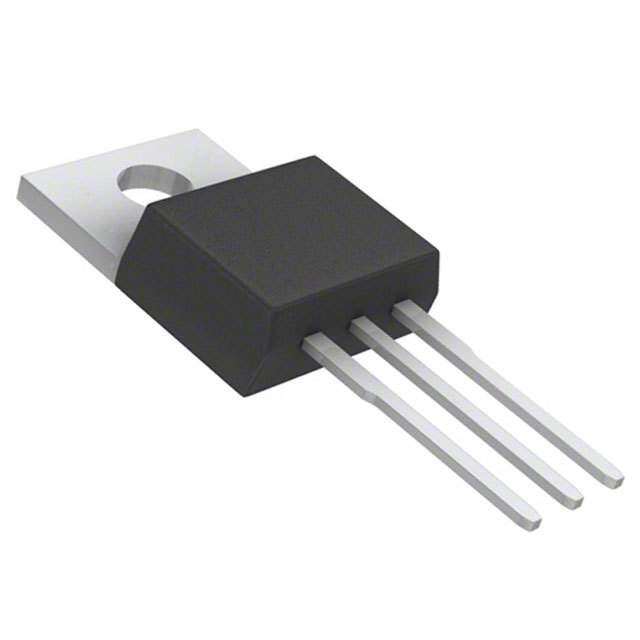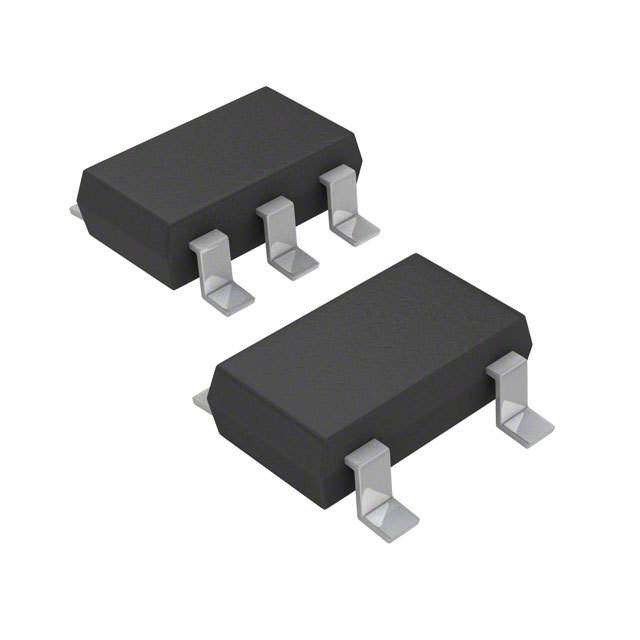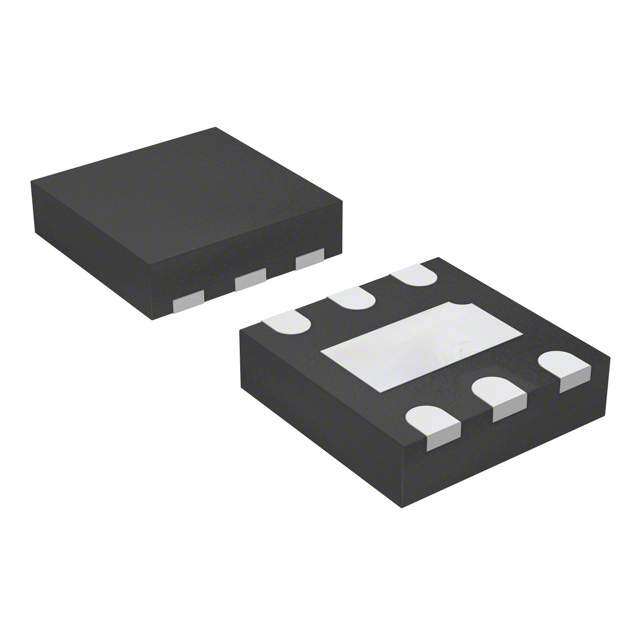ICGOO在线商城 > 集成电路(IC) > PMIC - 稳压器 - 线性 > TPS70751PWP
- 型号: TPS70751PWP
- 制造商: Texas Instruments
- 库位|库存: xxxx|xxxx
- 要求:
| 数量阶梯 | 香港交货 | 国内含税 |
| +xxxx | $xxxx | ¥xxxx |
查看当月历史价格
查看今年历史价格
TPS70751PWP产品简介:
ICGOO电子元器件商城为您提供TPS70751PWP由Texas Instruments设计生产,在icgoo商城现货销售,并且可以通过原厂、代理商等渠道进行代购。 TPS70751PWP价格参考¥11.90-¥24.27。Texas InstrumentsTPS70751PWP封装/规格:PMIC - 稳压器 - 线性, Linear Voltage Regulator IC Positive Fixed 2 Output 3.3V, 1.8V 250mA, 125mA 20-HTSSOP。您可以下载TPS70751PWP参考资料、Datasheet数据手册功能说明书,资料中有TPS70751PWP 详细功能的应用电路图电压和使用方法及教程。
| 参数 | 数值 |
| 产品目录 | 集成电路 (IC)半导体 |
| 描述 | IC REG LDO 3.3V/1.8V 20HTSSOP低压差稳压器 3.3V/1.2V 250/125mA |
| 产品分类 | |
| 品牌 | Texas Instruments |
| 产品手册 | |
| 产品图片 |
|
| rohs | 符合RoHS无铅 / 符合限制有害物质指令(RoHS)规范要求 |
| 产品系列 | 电源管理 IC,低压差稳压器,Texas Instruments TPS70751PWP- |
| 数据手册 | |
| 产品型号 | TPS70751PWP |
| 产品目录页面 | |
| 产品种类 | 低压差稳压器 |
| 供应商器件封装 | 20-HTSSOP |
| 其它名称 | 296-8034-5 |
| 包装 | 管件 |
| 单位重量 | 81.800 mg |
| 参考电压 | 1.22 V |
| 商标 | Texas Instruments |
| 回动电压—最大值 | 275 mV |
| 安装类型 | 表面贴装 |
| 安装风格 | SMD/SMT |
| 封装 | Tube |
| 封装/外壳 | 20-TSSOP(0.173",4.40mm 宽)裸焊盘 |
| 封装/箱体 | HTSSOP-20 |
| 工作温度 | -40°C ~ 125°C |
| 工厂包装数量 | 70 |
| 最大功率耗散 | 4.115 W |
| 最大工作温度 | + 125 C |
| 最大输入电压 | 6 V |
| 最小工作温度 | - 40 C |
| 最小输入电压 | + 2.7 V |
| 标准包装 | 70 |
| 电压-跌落(典型值) | 0.83V @ 250mA,- |
| 电压-输入 | 2.7 V ~ 6 V |
| 电压-输出 | 3.3V,1.8V |
| 电压调节准确度 | 2 % |
| 电流-输出 | 250mA,125mA |
| 电流-限制(最小值) | - |
| 稳压器拓扑 | 正,固定式 |
| 稳压器数 | 2 |
| 系列 | TPS70751 |
| 线路调整率 | 0.01 % |
| 负载调节 | 1 mV |
| 输入偏压电流—最大 | 0.19 mA |
| 输出电压 | 3.3 V, 1.8 V |
| 输出电流 | 250 mA |
| 输出端数量 | 2 Output |
| 输出类型 | Fixed |
| 配用 | /product-detail/zh/TPS70151EVM-152/296-10986-ND/381844 |

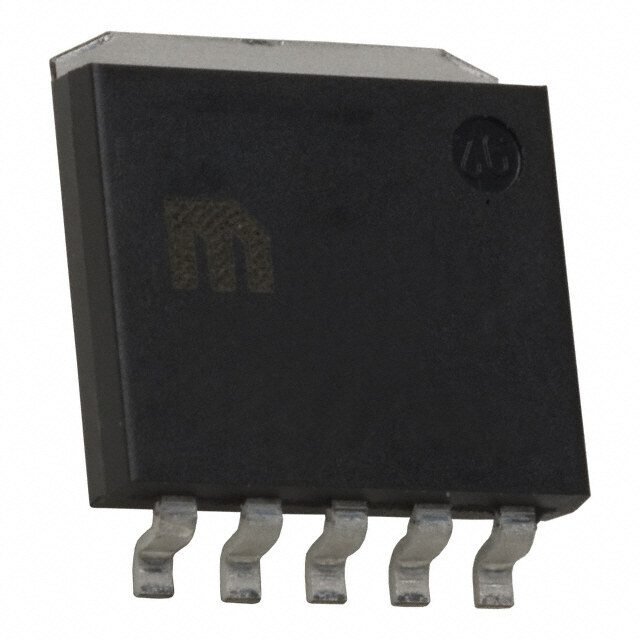
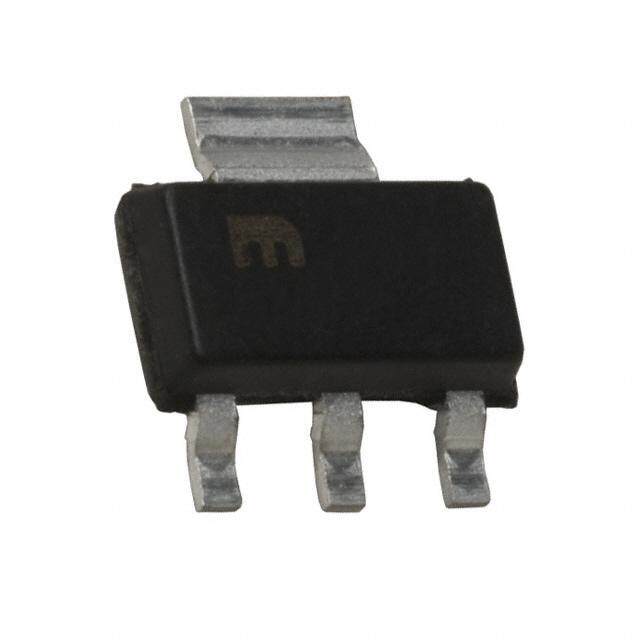
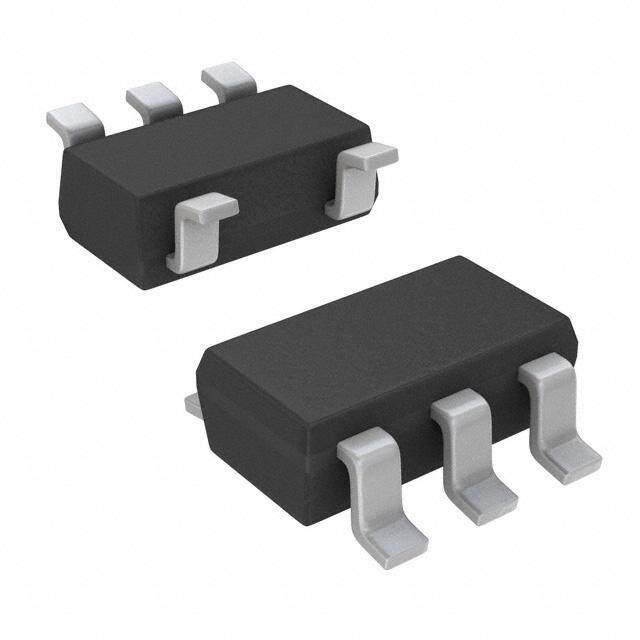
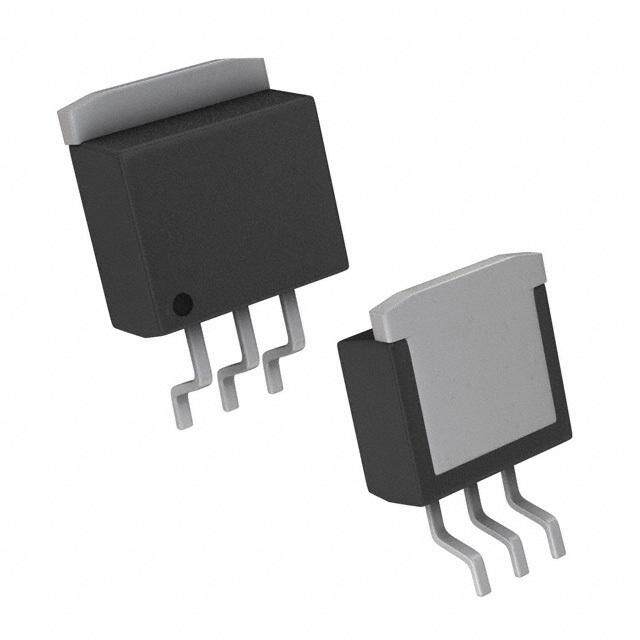





- 商务部:美国ITC正式对集成电路等产品启动337调查
- 曝三星4nm工艺存在良率问题 高通将骁龙8 Gen1或转产台积电
- 太阳诱电将投资9.5亿元在常州建新厂生产MLCC 预计2023年完工
- 英特尔发布欧洲新工厂建设计划 深化IDM 2.0 战略
- 台积电先进制程称霸业界 有大客户加持明年业绩稳了
- 达到5530亿美元!SIA预计今年全球半导体销售额将创下新高
- 英特尔拟将自动驾驶子公司Mobileye上市 估值或超500亿美元
- 三星加码芯片和SET,合并消费电子和移动部门,撤换高东真等 CEO
- 三星电子宣布重大人事变动 还合并消费电子和移动部门
- 海关总署:前11个月进口集成电路产品价值2.52万亿元 增长14.8%
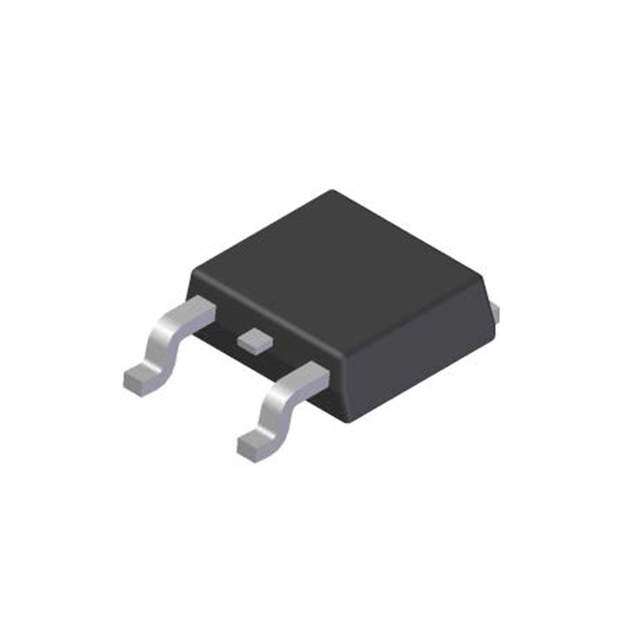
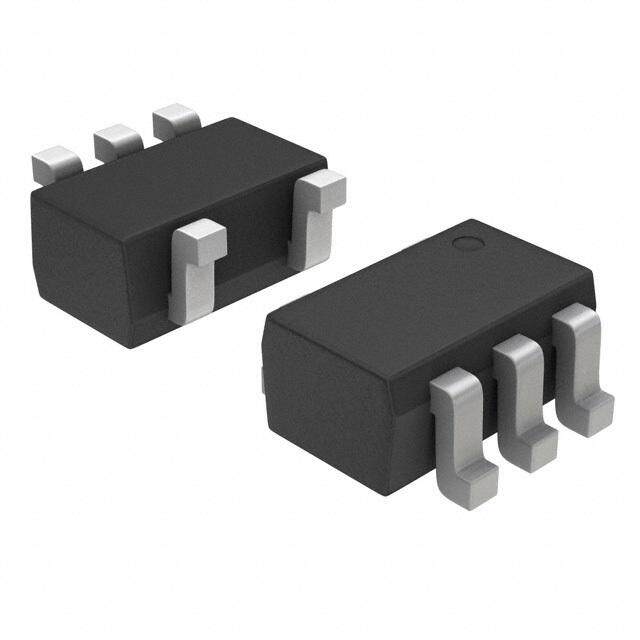
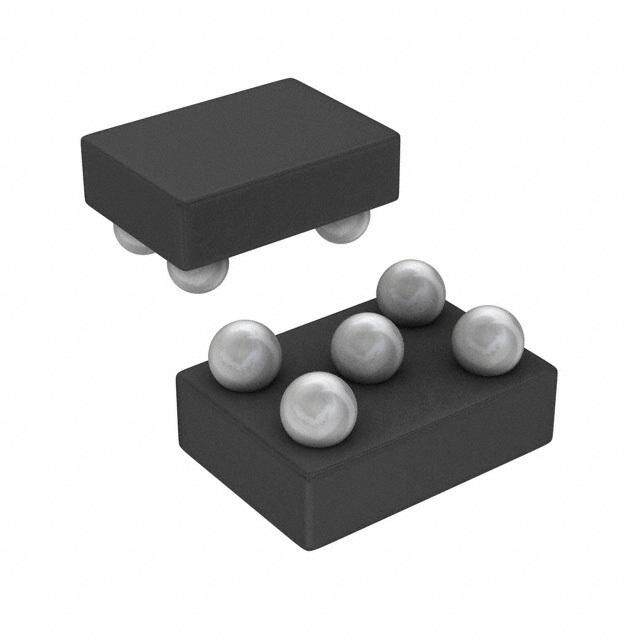
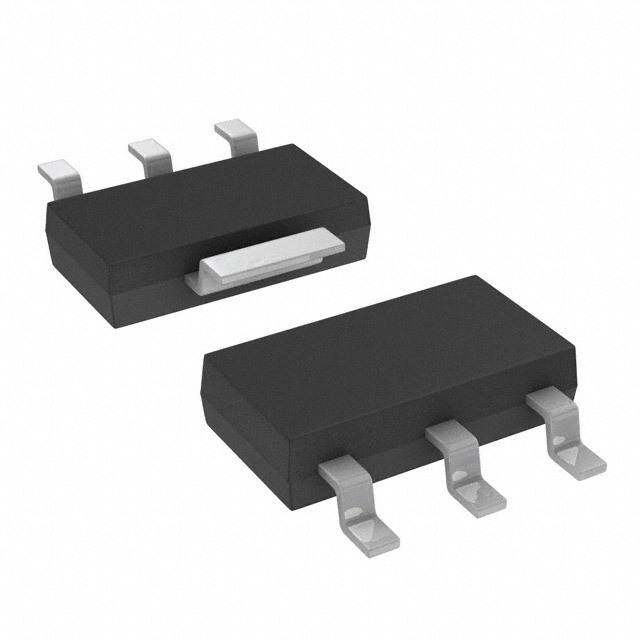
PDF Datasheet 数据手册内容提取
TPS70745, TPS70748 TPS70751, TPS70758 TPS70702 www.ti.com SLVS291D–MAY2000–REVISEDDECEMBER2007 Dual-Output, Low Dropout Voltage Regulators with Power-Up Sequencing for Split-Voltage DSP Systems FEATURES DESCRIPTION 1 • DualOutputVoltagesforSplit-Supply TPS707xx family devices are designed to provide a 23 Applications complete power management solution for the • SelectablePower-UpSequencingforDSP TMS320™ DSP family, processor power, ASIC, Applications(SeePartNumberTPS708xxfor FPGA, and digital applications where dual output voltage regulators are required. Easy programmability IndependentEnableOutputs) of the sequencing function makes the TPS707xx • OutputCurrentRangeof250mAonRegulator family ideal for any TMS320 DSP applications with 1and125mAonRegulator2 power sequencing requirements. Differentiated • FastTransientResponse features, such as accuracy, fast transient response, • VoltageOptions:3.3V/2.5V,3.3V/1.8V, SVS supervisory circuit, manual reset inputs, and an enablefunction,provideacompletesystemsolution. 3.3V/1.5V,3.3V/1.2V,andDualAdjustable Outputs The TPS707xx family of voltage regulators offer very • OpenDrainPower-OnResetwith120msDelay low dropout voltage and dual outputs with power-up sequence control, which is designed primarily for • OpenDrainPowerGoodforRegulator1 DSP applications. These devices have extremely low • Ultralow190m A(typ)QuiescentCurrent noise output performance without using any added • 1m AInputCurrentDuringStandby filter bypass capacitors and are designed to have a fast transient response and be stable with 10m F low • LowNoise:65m V WithoutBypassCapacitor RMS ESRcapacitors. • QuickOutputCapacitorDischargeFeature These devices have fixed 3.3V/2.5V, 3.3V/1.8V, • TwoManualResetInputs 3.3V/1.5V, 3.3V/1.2V, and adjustable/adjustable • 2%AccuracyOverLoadandTemperature voltage options. Regulator 1 can support up to • UndervoltageLockout(UVLO)Feature 250mA, and regulator 2 can support up to 125mA. Separate voltage inputs allow the designer to • 20-PinPowerPAD™TSSOPPackage configurethesourcepower. • ThermalShutdownProtection PWP PACKAGE (TOP VIEW) NC 1 20 NC VIN1 2 19 VOUT1 VIN1 3 18 VOUT1 MR1 4 17 V /FB1 SENSE1 MR2 5 16 PG1 EN 6 15 RESET SEQ 7 14 V /FB2 SENSE2 GND 8 13 V OUT2 V 9 12 V IN2 OUT2 V 10 11 NC IN2 1 Pleasebeawarethatanimportantnoticeconcerningavailability,standardwarranty,anduseincriticalapplicationsof TexasInstrumentssemiconductorproductsanddisclaimerstheretoappearsattheendofthisdatasheet. PowerPAD,TMS320aretrademarksofTexasInstruments. 2 Allothertrademarksarethepropertyoftheirrespectiveowners. 3 PRODUCTIONDATAinformationiscurrentasofpublicationdate. Copyright©2000–2007,TexasInstrumentsIncorporated Products conform to specifications per the terms of the Texas Instruments standard warranty. Production processing does not necessarilyincludetestingofallparameters.
TPS70745, TPS70748 TPS70751, TPS70758 TPS70702 www.ti.com SLVS291D–MAY2000–REVISEDDECEMBER2007 TPS70751 PWP DSP I/O 3.3V 5V V VOUT1 IN1 0.1mF 10mF V SENSE1 250kW PG1 PG1 MR2 MR2 >2V V IN2 <0.7V 250kW 0.1mF RESET RESET >2V EN MR1 MR1 >2V EN <0.7V <0.7V V SENSE2 SEQ 1.8V V Core OUT2 10mF Because the PMOS device behaves as a low-value resistor, the dropout voltage is very low (typically 83mV on regulator 1) and is directly proportional to the output current. Additionally, because the PMOS pass element is a voltage-driven device, the quiescent current is very low and independent of output loading (maximum of 230m A over the full range of output current). This LDO family also features a sleep mode; applying a high signal to EN (enable)shutsdownbothregulators,reducingtheinputcurrentto1m AatT =+25(cid:176) C. J The device is enabled when the EN pin is connected to a low-level input voltage. The output voltages of the two regulatorsaresensedattheV andV pins,respectively. SENSE1 SENSE2 The input signal at the SEQ pin controls the power-up sequence of the two regulators. When the device is enabled and the SEQ terminal is pulled high or left open, V turns on first and V remains off until V OUT2 OUT1 OUT2 reaches approximately 83% of its regulated output voltage. At that time V is turned on. If V is pulled OUT1 OUT2 below 83% (for example, an overload condition), V is turned off. Pulling the SEQ terminal low reverses the OUT1 power-uporderandV isturnedonfirst.TheSEQpinisconnectedtoaninternalpull-upcurrentsource. OUT1 For each regulator, there is an internal discharge transistor to discharge the output capacitor when the regulator isturnedoff(disabled). The PG1 pin reports the voltage conditions at V , which can be used to implement an SVS for the circuitry OUT1 suppliedbyregulator1. The TPS707xx features a RESET (SVS, POR, or Power-On Reset). RESET output initiates a reset in DSP systems and related digital applications in the event of an undervoltage condition. RESET indicates the status of V and both manual reset pins (MR1 and MR2). When V reaches 95% of its regulated voltage and MR1 OUT2 OUT2 and MR2 are in the logic high state, RESET goes to a high impedance state after a 120ms delay. RESET goes to the logic low state when the V regulated output voltage is pulled below 95% (for example, an overload OUT2 condition)ofitsregulatedvoltage.TomonitorV ,thePG1outputpincanbeconnectedtoMR1orMR2. OUT1 The device has an undervoltage lockout (UVLO) circuit that prevents the internal regulators from turning on until V reaches2.5V. IN1 2 SubmitDocumentationFeedback Copyright©2000–2007,TexasInstrumentsIncorporated
TPS70745, TPS70748 TPS70751, TPS70758 TPS70702 www.ti.com SLVS291D–MAY2000–REVISEDDECEMBER2007 This integrated circuit can be damaged by ESD. Texas Instruments recommends that all integrated circuits be handled with appropriateprecautions.Failuretoobserveproperhandlingandinstallationprocedurescancausedamage. ESDdamagecanrangefromsubtleperformancedegradationtocompletedevicefailure.Precisionintegratedcircuitsmaybemore susceptibletodamagebecauseverysmallparametricchangescouldcausethedevicenottomeetitspublishedspecifications. ORDERINGINFORMATION(1) VOLTAGE(V)(2) PACKAGE- SPECIFIED LEAD TEMPERATURE ORDERING TRANSPORT PRODUCT V V (DESIGNATOR) RANGE(T ) NUMBER MEDIA,QUANTITY OUT1 OUT2 J TPS70702PWP Tube,70 TPS70702 Adjustable Adjustable HTSSOP-24(PWP) -40(cid:176) Cto+125(cid:176) C TPS70702PWPR TapeandReel,2000 TPS70745PWP Tube,70 TPS70745 3.3V 1.2V HTSSOP-24(PWP) -40(cid:176) Cto+125(cid:176) C TPS70745PWPR TapeandReel,2000 TPS70748PWP Tube,70 TPS70748 3.3V 1.5V HTSSOP-24(PWP) -40(cid:176) Cto+125(cid:176) C TPS70748PWPR TapeandReel,2000 TPS70751PWP Tube,70 TPS70751 3.3V 1.8V HTSSOP-24(PWP) -40(cid:176) Cto+125(cid:176) C TPS70751PWPR TapeandReel,2000 TPS70758PWP Tube,70 TPS70758 3.3V 2.5V HTSSOP-24(PWP) -40(cid:176) Cto+125(cid:176) C TPS70758PWPR TapeandReel,2000 (1) ForthemostcurrentpackageandorderinginformationseethePackageOptionAddendumlocatedattheendofthisdocument,orsee theTIwebsiteatwww.ti.com. (2) Forfixed1.20Voperation,tieFBtoOUT. ABSOLUTE MAXIMUM RATINGS Overoperatingfree-airtemperaturerange(unlessotherwisenoted)(1) TPS707xx UNIT Inputvoltagerange:V ,V (2) –0.3to+7 V IN1 IN2 VoltagerangeatEN –0.3to+7 V Outputvoltagerange(V ,V ) 5.5 V OUT1 SENSE1 Outputvoltagerange(V ,V ) 5.5 V OUT2 SENSE2 MaximumRESET,PG1voltage 7 V MaximumMR1,MR2,andSEQvoltage V V IN1 Peakoutputcurrent Internallylimited Continuoustotalpowerdissipation SeeDissipationRatingsTable Junctiontemperaturerange,T –40to+150 (cid:176) C J Storagetemperaturerange,T –65to+150 (cid:176) C stg ESDrating,HBM 2 kV (1) Stressesbeyondthoselistedunderabsolutemaximumratingsmaycausepermanentdamagetothedevice.Thesearestressratings only,andfunctionaloperationofthedeviceattheseoranyotherconditionsbeyondthoseindicatedunderrecommendedoperating conditionsisnotimplied.Exposuretoabsolute-maximum-ratedconditionsforextendedperiodsmayaffectdevicereliability. (2) Allvoltagesaretiedtonetworkground. DISSIPATION RATINGS DERATING PACKAGE AIRFLOW(CFM) T ≤+25(cid:176) C FACTOR T =+70(cid:176) C T =+85(cid:176) C A A A 0 3.067W 30.67mW/(cid:176) C 1.687W 1.227W PWP(1) 250 4.115W 41.15mW/(cid:176) C 2.265W 1.646W (1) Thisparameterismeasuredwiththerecommendedcopperheatsinkpatternona4-layerPCB,1oz.copperona4-inby4-inground layer.Formoreinformation,refertoTItechnicalbriefSLMA002. Copyright©2000–2007,TexasInstrumentsIncorporated SubmitDocumentationFeedback 3
TPS70745, TPS70748 TPS70751, TPS70758 TPS70702 www.ti.com SLVS291D–MAY2000–REVISEDDECEMBER2007 RECOMMENDED OPERATING CONDITIONS Overoperatingtemperaturerange(unlessotherwisenoted). MIN MAX UNIT Inputvoltage,V(1)(regulator1and2) 2.7 6 V I Outputcurrent,I (regulator1) 0 250 mA O Outputcurrent,I (regulator2) 0 125 mA O Outputvoltagerange(foradjustableoption) 1.22 5.5 V Operatingjunctiontemperature,T –40 +125 (cid:176) C J (1) Tocalculatetheminimuminputvoltageformaximumoutputcurrent,usethefollowingequation:V =V +V . I(min) O(max) DO(maxload) ELECTRICAL CHARACTERISTICS Overrecommendedoperatingjunctiontemperaturerange(T =–40(cid:176) Cto+125(cid:176) C),V orV =V +1V,I =1mA, J IN1 IN2 OUT(nom) O EN=0V,andC =33m F(unlessotherwisenoted). O PARAMETER TESTCONDITIONS MIN TYP MAX UNIT 2.7V<V <6V, Reference T =+25(cid:176)IC FBconnectedtoVO 1.22 J voltage 2.7V<V <6V, FBconnectedtoV 1.196 1.244 I O 2.7V<V <6V, T =+25(cid:176) C 1.2 I J 1.2VOutput 2.7V<V <6V, 1.176 1.224 I 2.7V<V <6V, T =+25(cid:176) C 1.5 I J 1.5VOutput VO Ovoulttapguet (1),(2) 2.7V<VI<6V, 1.47 1.53 V 2.8V<V <6V, T =+25(cid:176) C 1.8 I J 1.8VOutput 2.8V<V <6V, 1.764 1.836 I 3.5V<V <6V, T =+25(cid:176) C 2.5 I J 2.5VOutput 3.5V<V <6V, 2.45 2.55 I 4.3V<V <6V, T =+25(cid:176) C 3.3 I J 3.3VOutput 4.3V<V <6V, 3.234 3.366 I Quiescentcurrent(GNDcurrent)for (2) T =+25(cid:176) C 190 regulator1andregulator2,EN=0V(1) (2) J 230 m A Outputvoltagelineregulation(∆V /V ) V +1V<V ≤6V, T =+25(cid:176) C(1) 0.01% O O O I J forregulator1andregulator2 (3) V +1V<V ≤6V (1) 0.1% V O I LoadregulationforV andV T =+25(cid:176) C (2) 1 mV OUT1 OUT2 J V Outputnoise Regulator1 65 n voltage BW=300Hzto50kHz, CO=33m F,TJ=+25(cid:176) C m VRMS Regulator2 65 Regulator1 1.6 1.9 Outputcurrentlimit V =0V m A OUT Regulator2 0.750 1 Thermalshutdownjunctiontemperature +150 (cid:176) C EN=V, T =+25(cid:176) C 2 Regulator1 I J m A II Standby EN=VI 6 (standby) current EN=V, T =+25(cid:176) C 2 Regulator2 I J m A EN=V 6 I PSRR Power-supplyripple f=1kHz,C =33m F, T =+25(cid:176) C(1) dB O J 60 rejection (1) Minimuminputoperatingvoltageis2.7VorV +1V,whicheverisgreater.Maximuminputvoltage=6V,minimumoutput O(typ) current=1mA. (2) I =1mAto250mAforRegulator1and1mAto125mAforRegulator2. O (cid:5)VImax(cid:2)2.7V(cid:6) (3) IfV <1.8VthenV =6V,V =2.7V:LineReg.(mV)(cid:3)(%(cid:4)V)(cid:1)VO 100 (cid:1)1000 O Imax Imin (cid:6)VImax(cid:3)(cid:6)VO(cid:2)1V(cid:7)(cid:7) IfV >2.5VthenV =6V,V =V +1V:LineReg.(mV)(cid:4)(%(cid:5)V)(cid:1)VO 100 (cid:1)1000 O Imax Imin O 4 SubmitDocumentationFeedback Copyright©2000–2007,TexasInstrumentsIncorporated
TPS70745, TPS70748 TPS70751, TPS70758 TPS70702 www.ti.com SLVS291D–MAY2000–REVISEDDECEMBER2007 ELECTRICAL CHARACTERISTICS (continued) Overrecommendedoperatingjunctiontemperaturerange(T =–40(cid:176) Cto+125(cid:176) C),V orV =V +1V,I =1mA, J IN1 IN2 OUT(nom) O EN=0V,andC =33m F(unlessotherwisenoted). O PARAMETER TESTCONDITIONS MIN TYP MAX UNIT RESETTerminal MinimuminputvoltageforvalidRESET I =300m A, V ≤0.8V 1.0 1.3 V RESET (RESET) Tripthresholdvoltage V decreasing 92% 95% 98% V O OUT Hysteresisvoltage MeasuredatV 0.5% V O OUT t RESETpulseduration 80 120 160 ms (RESET) t Risingedgedeglitch 30 m s r(RESET) Outputlowvoltage V =3.5V, I =1mA 0.15 0.4 V I O(RESET) Leakagecurrent V =6V 1 m A (RESET) PG1Terminal MinimuminputvoltageforvalidPG1 I =300m A, V ≤0.8V 1.0 1.3 V (PG1) (PG1) Tripthresholdvoltage V decreasing 92% 95% 98% V O OUT Hysteresisvoltage MeasuredatV 0.5% V O OUT t Fallingedgedeglitch 30 m s f(PG1) Outputlowvoltage V =2.7V, I =1mA 0.15 0.4 V I O(PG1) Leakagecurrent V =6V 1 m A (PG1) ENTerminal HighlevelENinputvoltage 2 V LowlevelENinputvoltage 0.7 V Inputcurrent(EN) –1 1 m A SEQTerminal HighlevelSEQinputvoltage 2 V LowlevelSEQinputvoltage 0.7 V Fallingedgedelay MeasuredatV 140 m s O SEQpull-upcurrentsource 6 m A MR1/MR2Terminals Highlevelinputvoltage 2 V Lowlevelinputvoltage 0.7 V Pull-upcurrentsource 6 m A V Terminal OUT2 V UVcomparator:Positive-going OUT2 inputthresholdvoltageofV UV 80%V 83%V 86%V V OUT2 O O O comparator VOUT2UVcomparator:Fallingedge VSENSE_2decreasingbelowthreshold 140 m s deglitch Peakoutputcurrent 2mspulsewidth 375 mA Dischargetransistorcurrent V =1.5V 7.5 mA OUT2 Copyright©2000–2007,TexasInstrumentsIncorporated SubmitDocumentationFeedback 5
TPS70745, TPS70748 TPS70751, TPS70758 TPS70702 www.ti.com SLVS291D–MAY2000–REVISEDDECEMBER2007 ELECTRICAL CHARACTERISTICS (continued) Overrecommendedoperatingjunctiontemperaturerange(T =–40(cid:176) Cto+125(cid:176) C),V orV =V +1V,I =1mA, J IN1 IN2 OUT(nom) O EN=0V,andC =33m F(unlessotherwisenoted). O PARAMETER TESTCONDITIONS MIN TYP MAX UNIT V Terminal OUT1 V UVcomparator:Positive-going OUT1 inputthresholdvoltageofV UV 80%V 83%V 86%V V OUT1 O O O comparator V UVcomparator:Hysteresis 0.5%V mV OUT1 O VOUT1UVcomparator:Fallingedge V decreasingbelowthreshold 140 m s deglitch SENSE_1 Dropoutvoltage(4) I =250mA,T =+25(cid:176) C V =3.2V 83 mV O J IN1 Dropoutvoltage(4) I =250mA, V =3.2V 140 mV O IN1 Peakoutputcurrent(4) 2mspulsewidth 750 mA Dischargetransistorcurrent V =1.5V 7.5 mA OUT1 V UVLOthreshold 2.4 2.65 V IN1 FBTerminal Inputcurrent:TPS70702 FB=1.8V 1 m A (4) Inputvoltage(V orV )=V –100mV.For1.5V,1.8Vand2.5Vregulators,thedropoutvoltageislimitedbyinputvoltagerange. IN1 IN2 O(typ) The3.3Vregulatorinputissetto3.2Vtoperformthistest. 6 SubmitDocumentationFeedback Copyright©2000–2007,TexasInstrumentsIncorporated
TPS70745, TPS70748 TPS70751, TPS70758 TPS70702 www.ti.com SLVS291D–MAY2000–REVISEDDECEMBER2007 DEVICE INFORMATION FixedVoltageVersion VIN1(2 Pins) VOUT1(2 Pins) UVLO1 Comp Current 10 kW - Sense ENA_1 VSENSE1 2.5 V + (see Note A) - + ENA_1 GND Reference Vref FB1 Thermal Shutdown Vref PG1 FB1 - Rising Edge 0.95 x Vref + Deglitch PG VIN1 Comp MR2 Reset Comp RESET FB2 - Rising Edge Falling Edge VOUT2UV Comp 0.95 x Vref + Deglitch Delay VIN1 FB2 - Falling Edge 0.83xVref + Deglitch Power ENA_1 MR1 Sequence FB1 - Falling Edge Logic ENA_2 0.83xVref + Deglitch Vref VOUT1UV Comp - + EN ENA_2 VIN1 VSENSE2 Current ENA_2 (see Note A) SEQ Sense 10 kW (see Note B) VIN2(2 Pins) VOUT2(2 Pins) A. For most applications, V and V should be externally connected to V as close as possible to the SENSE1 SENSE2 OUT device. For other implementations, refer to SENSE terminal connection discussion in the Application Information section. B. IftheSEQterminalisfloatingattheinput,V powersupfirst. OUT2 Copyright©2000–2007,TexasInstrumentsIncorporated SubmitDocumentationFeedback 7
TPS70745, TPS70748 TPS70751, TPS70758 TPS70702 www.ti.com SLVS291D–MAY2000–REVISEDDECEMBER2007 AdjustableVoltageVersion VIN1(2 Pins) VOUT1(2 Pins) UVLO Comp Current - Sense ENA_1 FB1 2.5 V + (see Note A) - + ENA_1 GND Reference Vref Thermal Shutdown Vref PG1 FB1 - Rising Edge 0.95 x Vref + Deglitch PG VIN1 Comp MR2 Reset Comp RESET FB2 - Rising Edge Falling Edge VOUT2UV Comp 0.95 x Vref + Deglitch DelVaIyN1 FB2 - Falling Edge 0.83xVref + Deglitch Power ENA_1 MR1 Sequence FB1 - Falling Edge Logic ENA_2 0.83xVref + Deglitch Vref VOUT1UV Comp - + EN ENA_2 VIN1 FB2 Current ENA_2 (see Note A) SEQ Sense (see Note B) VIN2(2 Pins) VOUT2(2 Pins) A. For most applications, FB1 and FB2 should be externally connected to resistor dividers as close as possible to the device. For other implementations, refer to FB terminals connection discussion in the Application Information section. B. IftheSEQterminalisfloatingattheinput,V powersupfirst OUT2 8 SubmitDocumentationFeedback Copyright©2000–2007,TexasInstrumentsIncorporated
TPS70745, TPS70748 TPS70751, TPS70758 TPS70702 www.ti.com SLVS291D–MAY2000–REVISEDDECEMBER2007 RESETTimingDiagram(withV PoweredUp) IN1 VIN2 VRES VRES (see Note A) t VOUT2 VIT+(see Note B) VIT+(see Note B) Threshold Voltage VIT− VIT− (see Note B) (see Note B) t RESET Output 120 ms 120 ms Î Delay Delay Î Î Î Output Output Î Î Undefined Undefined Î Î t Î Î NOTES: A. VRES is the minÎimum input voltage for a valid RESET. The symbol VRES is not currently listed within EÎIA or JEDEC standards for semiconductor symbology. B. VIT −Trip voltage is typically 5% lower than the output voltage (95%VO) VIT− to VIT+ is the hysteresis voltage. PG1TimingDiagram VIN1 VUVLO VUVLO VPG1 VPG1 (see Note A) t VOUT2 VIT+(see Note B) VIT+(see Note B) Threshold Voltage VIT− VIT− (see Note B) (see Note B) t PG1 OuÎtputÎ ÎÎ ÎÎ ÎÎ OutputÎÎ ÎÎOutput UndefinedÎÎ ÎÎUndefined ÎÎ ÎÎ t ÎÎ ÎÎ NOTES: A. VPG1 is thÎe mÎinimum input voltage for a valid PG1. The symbol VPG1 is not currently listed withinÎ EIAÎ or JEDEC standards for semiconductor symbology. B. VIT −Trip voltage is typically 5% lower than the output voltage (95%VO) VIT− to VIT+ is the hysteresis voltage. Copyright©2000–2007,TexasInstrumentsIncorporated SubmitDocumentationFeedback 9
TPS70745, TPS70748 TPS70751, TPS70758 TPS70702 www.ti.com SLVS291D–MAY2000–REVISEDDECEMBER2007 Table1. TERMINALFUNCTIONS TERMINAL I/O DESCRIPTION NAME NO. EN 6 I Activelowenable GND 8 — Ground MR1 4 I Manualresetinput1,activelow,pulledupinternally MR2 5 I Manualresetinput2,activelow,pulledupinternally NC 1,11,20 — Noconnection Opendrainoutput,lowwhenV voltageislessthan95%ofthenominalregulated PG1 16 O OUT1 voltage RESET 15 O Opendrainoutput,SVS(power-onreset)signal,activelow Power-upsequencecontrol:SEQ=High,V powersupfirst; SEQ 7 I OUT2 SEQ=Low,V powersupfirst,SEQterminalpulledupinternally. OUT1 V 2,3 I Inputvoltageofregulator1 IN1 V 9,10 I Inputvoltageofregulator2 IN2 V 18,19 O Outputvoltageofregulator1 OUT1 V 12,13 O Outputvoltageofregulator2 OUT2 V /FB2 14 I Regulator2outputvoltagesense/regulator2feedbackforadjustable SENSE2 V /FB1 17 I Regulator1outputvoltagesense/regulator1feedbackforadjustable SENSE1 Detailed Description The TPS707xx low dropout regulator family provides dual regulated output voltages for DSP applications that require high-performance power management solutions. These devices provide fast transient response and high accuracy with small output capacitors, while drawing low quiescent current. Programmable sequencing provides a power solution for DSPs without any external component requirements. This architecture reduces the component cost and board space while increasing total system reliability. The TPS707xx family has an enable feature that puts the device in sleep mode, reducing the input currents to less than 3m A. Other features are integrated SVS (Power-On Reset, RESET) and Power Good (PG1) that monitor output voltages and provide logicoutputtothesystem.ThesedifferentiatedfeaturesprovideacompleteDSPpowersolution. The TPS707xx, unlike many other LDOs, feature very low quiescent current that remains virtually constant even with varying loads. Conventional LDO regulators use a pnp pass element, the base current of which is directly proportional to the load current through the regulator (I = I /b ). The TPS707xx uses a PMOS transistor to pass B C current; because the gate of the PMOS is voltage=driven, operating current is low and stable over the full load range. Pin Functions Enable The EN terminal is an input that enables or shuts down the device. If EN is at a voltage high signal, the device is inshutdownmode.WhenENgoestovoltagelow,thedeviceisenabled. Sequence TheSEQterminalisaninputthatprogramswhich output voltage (V or V ) turns on first. When the device OUT1 OUT2 is enabled and the SEQ terminal is pulled high or left open, V turns on first and V remains off until V OUT2 OUT1 OUT2 reaches approximately 83% of its regulated output voltage. At that time, V is turned on. If V is pulled OUT1 OUT2 below 83% (for example, in an overload condition) V is turned off. These terminals have a 6-m A pullup OUT1 currenttoV . IN1 Pulling the SEQ terminal low reverses the power-up order and V is turned on first. For detailed timing OUT1 diagrams,refertoFigure36throughFigure40. 10 SubmitDocumentationFeedback Copyright©2000–2007,TexasInstrumentsIncorporated
TPS70745, TPS70748 TPS70751, TPS70758 TPS70702 www.ti.com SLVS291D–MAY2000–REVISEDDECEMBER2007 Power-Good The PG1 is an open drain, active high output terminal that indicates the status of the V regulator. When the OUT1 V reaches 95% of its regulated voltage, PG1 goes to a high impedance state. It goes to a low impedance OUT1 state when it is pulled below 95% (for example, doing an overload condition) of its regulated voltage. The open drainoutputofthePG1terminalrequiresapull-upresistor. ManualResetPins(MR1andMR2) MR1 and MR2 are active low input terminals used to trigger a reset condition. When either MR1 or MR2 is pulled tologiclow,aPOR(RESET)occurs.Theseterminalshavea6-m Apull-upcurrenttoV . IN1 Sense(V ,V ) SENSE1 SENSE2 The sense terminals of fixed-output options must be connected to the regulator output, and the connection should be as short as possible. Internally, sense connects to high-impedance, wide-bandwidth amplifiers through a resistor-divider network and noise pickup feeds through to the regulator output. It is essential to route the sense connection in such a way to minimize or avoid noise pickup. Adding RC networks between the V SENSE terminals and V terminals to filter noise is not recommended because these networks can cause the OUT regulatorstooscillate. FB1andFB2 FB1 and FB2 are input terminals used for adjustable-output devices and must be connected to the external feedback resistor divider. FB1 and FB2 connections should be as short as possible. It is essential to route them in such a way as to minimize or avoid noise pickup. Adding RC networks between the FB terminals and V OUT terminalstofilternoiseisnotrecommendedbecausethesenetworkscancausetheregulatorstooscillate. RESETIndicator The TPS707xx features a RESET (SVS, POR, or Power-On Reset). RESET can be used to drive power-on reset circuitry or a low-battery indicator. RESET is an active low, open drain output that indicates the status of the V regulator and both manual reset pins (MR1 and MR2). When V exceeds 95% of its regulated voltage, OUT2 OUT2 and MR1 and MR2 are in the high impedance state, RESET goes to a high-impedance state after 120ms delay. RESET goes to a low-impedance state when V is pulled below 95% (for example, an overload condition) of OUT2 its regulated voltage. To monitor V , the PG1 output pin can be connected to MR1 or MR2. The open drain OUT1 outputoftheRESETterminalrequiresapullupresistor.IfRESETisnotused,itcanbeleftfloating. V andV IN1 IN2 V andV areinputtotheregulators.InternalbiasvoltagesarepoweredbyV . IN1 IN2 IN1 V andV OUT1 OUT2 V andV areoutputterminalsoftheLDO. OUT1 OUT2 Copyright©2000–2007,TexasInstrumentsIncorporated SubmitDocumentationFeedback 11
TPS70745, TPS70748 TPS70751, TPS70758 TPS70702 www.ti.com SLVS291D–MAY2000–REVISEDDECEMBER2007 TYPICAL CHARACTERISTICS Table2.TableofGraphs FIGURE vsOutputcurrent Figure1toFigure3 V Outputvoltage O vsTemperature Figure4toFigure7 Groundcurrent vsJunctiontemperature Figure8 PSRR Power-supplyrejectionratio vsFrequency Figure9toFigure12 Outputspectralnoisedensity vsFrequency Figure13toFigure16 Z Outputimpedance vsFrequency Figure17toFigure20 O vsTemperature Figure21andFigure22 Dropoutvoltage vsInputvoltage Figure23andFigure24 Loadtransientresponse Figure25andFigure26 Linetransientresponse Figure27andFigure28 V Outputvoltageandenablevoltage vsTime(start-up) Figure29andFigure30 O Equivalentseriesresistance vsOutputcurrent Figure31toFigure34 Testcircuitfortypicalregionsofstability(equivalentseriesresistance)performance Figure35 TPS70751 TPS70751 OUTPUTVOLTAGE OUTPUTVOLTAGE vs vs OUTPUTCURRENT OUTPUTCURRENT 3.300 1.802 VIN1 = 4.3 V VIN2 = 2.8V 3.299 TA = 25°C 1.801 TA = 25°C VOUT1 VOUT2 3.298 V V 1.800 Output Voltage − 333...222999657 Output Voltage − 11..779998 − − O O 1.797 V 3.294 V 3.293 1.796 3.292 1.795 0 0.1 0.2 0.3 0.4 0.5 0.6 0 0.05 0.1 0.15 0.2 0.25 0.3 IO − Output Current − A IO − Output Current − A Figure1. Figure2. 12 SubmitDocumentationFeedback Copyright©2000–2007,TexasInstrumentsIncorporated
TPS70745, TPS70748 TPS70751, TPS70758 TPS70702 www.ti.com SLVS291D–MAY2000–REVISEDDECEMBER2007 TPS70745 TPS70751 OUTPUTVOLTAGE OUTPUTVOLTAGE vs vs OUTPUTCURRENT TEMPERATURE 1.201 3.286 VIN2 = 2.7 V VIN1 = 4.3 V TA = 25°C 3.284 IO = 1 mA 1.200 VOUT2 VOUT1 3.282 Output Voltage − V 11..119989 Output Voltage − V 333...222778680 − 1.197 − 3.274 O O V V 3.272 1.196 3.270 1.195 3.268 0 0.05 0.1 0.15 0.2 0.25 0.3 −40−25 −10 5 20 35 50 65 80 95 110 125 IO − Output Current − A T − Temperature − °C Figure3. Figure4. TPS70751 TPS70751 OUTPUTVOLTAGE OUTPUTVOLTAGE vs vs TEMPERATURE TEMPERATURE 3.288 1.800 VIN1 = 4.3 V VIN2 = 2.8 V 3.286 IO = 500 mA IO = 1 mA VOUT1 1.798 VOUT2 3.284 V V 1.796 − 3.282 − e e g g olta 3.280 olta 1.794 V V utput 3.278 utput 1.792 O O − 3.276 − O O1.790 V V 3.274 1.788 3.272 3.270 1.786 −40−25 −10 5 20 35 50 65 80 95 110 125 −40−25 −10 5 20 35 50 65 80 95 110 125 T − Temperature − °C T − Temperature − °C Figure5. Figure6. Copyright©2000–2007,TexasInstrumentsIncorporated SubmitDocumentationFeedback 13
TPS70745, TPS70748 TPS70751, TPS70758 TPS70702 www.ti.com SLVS291D–MAY2000–REVISEDDECEMBER2007 TPS70751 OUTPUTVOLTAGE GROUNDCURRENT vs vs TEMPERATURE JUNCTIONTEMPERATURE 1.799 210 VIN2 = 2.8 V Regulator 1 and Regulator 2 1.798 IO = 250 mA VOUT2 200 1.797 IOUT1 = 1 mA V IOUT2 = 1 mA − 1.796 A 190 ge m− olta 1.795 ent utput V 1.794 nd Curr 180 − OO1.793 Grou 170 IIOOUUTT12 == 255000 mmAA V 1.792 160 1.791 1.790 150 −40−25 −10 5 20 35 50 65 80 95 110 125 −40−25 −10 5 20 35 50 65 80 95 110 125 T − Temperature − °C TJ − Junction Temperature − °C Figure7. Figure8. TPS70751 TPS70751 POWER-SUPPLYREJECTIONRATIO POWER-SUPPLYREJECTIONRATIO vs vs FREQUENCY FREQUENCY −10 10 Ratio − dB −−2300 ICVOOO = U= 1T 2012 m m AF Ratio − dB −100 ICVOOO = U= 5T 20120 mmFA Rejection −40 Rejection −−2300 wer Supply −−6500 wer Supply −−−465000 Po −70 Po R − R − −70 R R PS −80 PS −80 −90 −90 10 100 1 k 10 k 100 k 1 M 10 100 1 k 10 k 100 k 1 M f − Frequency − Hz f − Frequency − Hz Figure9. Figure10. 14 SubmitDocumentationFeedback Copyright©2000–2007,TexasInstrumentsIncorporated
TPS70745, TPS70748 TPS70751, TPS70758 TPS70702 www.ti.com SLVS291D–MAY2000–REVISEDDECEMBER2007 TPS70751 TPS70751 POWER-SUPPLYREJECTIONRATIO POWER-SUPPLYREJECTIONRATIO vs vs FREQUENCY FREQUENCY −10 10 B IO = 10 mA B IO = 250 mA o − d −20 CVOO U=T 222 m F o − d 0 CVOO U=T 222 m F Rati −30 Rati −10 n n o o cti −40 cti −20 e e ej ej R R y −50 y −30 pl pl p p u u r S −60 r S −40 e e w w o o P −70 P −50 − − R R R R S −80 S −60 P P −90 −70 10 100 1 k 10 k 100 k 1 M 10 100 1 k 10 k 100 k 1 M f − Frequency − Hz f − Frequency − Hz Figure11. Figure12. OUTPUTSPECTRALNOISEDENSITY OUTPUTSPECTRALNOISEDENSITY vs vs FREQUENCY FREQUENCY 10 10 VIN1 = 4.3 V VIN1 = 4.3 V Hz VOUT1 = 3.3 V z VOUT1 = 3.3 V H IO = 10 mA IO = 500 mA V V m nsity − 1 msity − 1 e n Output Spectral Noise D 0.1 Output Spectral Noise De 0.1 0.01 0.01 100 1 k 10 k 100 k 100 1 k 10 k 100 k f − Frequency − Hz f − Frequency − Hz Figure13. Figure14. Copyright©2000–2007,TexasInstrumentsIncorporated SubmitDocumentationFeedback 15
TPS70745, TPS70748 TPS70751, TPS70758 TPS70702 www.ti.com SLVS291D–MAY2000–REVISEDDECEMBER2007 OUTPUTSPECTRALNOISEDENSITY OUTPUTSPECTRALNOISEDENSITY vs vs FREQUENCY FREQUENCY 10 10 VIN2 = 2.8 V VIN2 = 2.8 V Hz VOUT2 = 1.8 V Hz VOUT2 = 1.8 V IO = 10 mA IO = 250 mA V V mDensity − 1 mDensity − 1 Noise Noise Output Spectral 0.1 Output Spectral 0.1 0.01 0.01 100 1 k 10 k 100 k 100 1 k 10 k 100 k f − Frequency − Hz f − Frequency − Hz Figure15. Figure16. OUTPUTIMPEDANCE OUTPUTIMPEDANCE vs vs FREQUENCY FREQUENCY 100 100 CO= 33mF CO= 33mF IO= 500 mA IO= 10 mA VO= 3.3V VO= 3.3V TA= 25°C TA= 25°C W 10 W 10 -e e - c c n n a a d d e e p p m 1 m 1 ut I ut I p p ut ut O O - - O 0.1 O 0.1 Z Z 0.01 0.01 10 100 1 k 10k 100k 1 M 10M 10 100 1 k 10k 100k 1 M 10M f - Frequency - Hz f - Frequency - Hz Figure17. Figure18. 16 SubmitDocumentationFeedback Copyright©2000–2007,TexasInstrumentsIncorporated
TPS70745, TPS70748 TPS70751, TPS70758 TPS70702 www.ti.com SLVS291D–MAY2000–REVISEDDECEMBER2007 OUTPUTIMPEDANCE OUTPUTIMPEDANCE vs vs FREQUENCY FREQUENCY 100 100 CO= 33mF CO= 33mF I = 250 mA I = 10 mA O O V = 1.8V V = 1.8V O O TA= 25°C TA= 25°C W 10 W 10 mpedance - 1 mpedance - 1 Output I Output I - - O 0.1 O 0.1 Z Z 0.01 0.01 10 100 1 k 10k 100k 1 M 10M 10 100 1 k 10k 100k 1 M 10M f - Frequency - Hz f - Frequency - Hz Figure19. Figure20. DROPOUTVOLTAGE DROPOUTVOLTAGE vs vs TEMPERATURE TEMPERATURE 250 6 CO = 33 m F CO = 33 m F VIN1 = 3.2 V VIN1 = 3.2 V 5 200 IO = 500 mA IO = 10 mA V V m m 4 − − e 150 e g g a a olt olt 3 V V out 100 out p p o o 2 Dr Dr 50 1 IO = 0 mA 0 0 −40−25 −10 5 20 35 50 65 80 95 110 125 −40−25 −10 5 20 35 50 65 80 95 110 125 T − Temperature − °C T − Temperature − °C Figure21. Figure22. Copyright©2000–2007,TexasInstrumentsIncorporated SubmitDocumentationFeedback 17
TPS70745, TPS70748 TPS70751, TPS70758 TPS70702 www.ti.com SLVS291D–MAY2000–REVISEDDECEMBER2007 TPS70702 TPS70702 DROPOUTVOLTAGE DROPOUTVOLTAGE vs vs INPUTVOLTAGE INPUTVOLTAGE 300 500 IO = 500 mA IO = 250 mA VIN1 VIN2 250 400 TJ = 125°C − mV 200 − mV TJ = 125°C ge TJ = 25°C ge 300 a a Volt 150 Volt TJ = 25°C out out 200 p p o 100 o Dr TJ= −40°C Dr TJ = −40°C 100 50 0 0 2.5 3 3.5 4 4.5 5 5.5 2.5 3 3.5 4 4.5 5 5.5 VI − Input Voltage − V VI − Input Voltage − V Figure23. Figure24. LOADTRANSIENTRESPONSE LOADTRANSIENTRESPONSE A A m m − Co = 33 m F − Co = 33 m F nt 500 TA = 25°C nt TA = 25°C urre VOUT1 = 3.3 V urre VOUT2 = 1.8 V ut C 250 ut C 250 p p ut ut O 0 O 0 − − O O I I V V nm nm ge ie − 20 ge ie − 20 ng ng aa aa Cholt 0 Cholt 0 − Out V − Out V Vutp −20 Vutp −20 D O D O 0 0.2 0.4 0.6 0.8 1 1.2 1.4 1.6 1.8 2 0 0.2 0.4 0.6 0.8 1 1.2 1.4 1.6 1.8 2 t − Time − ms t − Time − ms Figure25. Figure26. 18 SubmitDocumentationFeedback Copyright©2000–2007,TexasInstrumentsIncorporated
TPS70745, TPS70748 TPS70751, TPS70758 TPS70702 www.ti.com SLVS291D–MAY2000–REVISEDDECEMBER2007 LINETRANSIENTRESPONSE LINETRANSIENTRESPONSE V V − − e 5.3 e 3.8 g g a a olt olt V V ut ut p p n n − I 4.3 − I 2.8 VI VI V nm DV− Change iOOutput Voltage − −55000 ICVOOo = U= T5 31030 mmFA DV− Change inOOutput Voltage − mV −11000 ICVOOo = U= T2 32530 mmFA 0 20 40 60 80 100 120 140 160 180 200 0 20 40 60 80 100 120 140 160 180 200 t − Time − m s t − Time − m s Figure27. Figure28. OUTPUTVOLTAGEANDENABLEVOLTAGE OUTPUTVOLTAGEANDENABLEVOLTAGE vs vs TIME(START-UP) TIME(START-UP) Output Voltage − V 231 VCIVSOOOEo = UQ== T5 31=303 .03L m omVFwA Output Voltage − V 120 VCIVSOEOOo = UQ== T2 32=153 .0H8 m miVgFAh − − O O V 0 V −1 V V − 5 − 5 e e g g a a olt 0 olt 0 V V e e bl −5 bl −5 a a n n E E 0 0.2 0.4 0.6 0.8 1 1.2 1.4 1.6 1.8 2 0 0.2 0.4 0.6 0.8 1 1.2 1.4 1.6 1.8 2 t − Time (Start-Up) − ms t − Time (Start-Up) − ms Figure29. Figure30. Copyright©2000–2007,TexasInstrumentsIncorporated SubmitDocumentationFeedback 19
TPS70745, TPS70748 TPS70751, TPS70758 TPS70702 www.ti.com SLVS291D–MAY2000–REVISEDDECEMBER2007 TYPICALREGIONOFSTABILITY TYPICALREGIONOFSTABILITY EQUIVALENTSERIESRESISTANCE(1) EQUIVALENTSERIESRESISTANCE(1) vs vs OUTPUTCURRENT OUTPUTCURRENT 10 10 REGION OF INSTABILITY REGION OF INSTABILITY W W Resistance- 1 VTCJOO=== 2 315.03°C mVF Resistance- VCTVTCJOJOOO====== 2 2 363655....3°838CC VVmFF Equivalent Series - 0.1 50 mW Equivalent Series - 1 250 mW R R ES REGION OF INSTABILITY ES REGION OF INSTABILITY 0.01 0.1 0 50 100 150 200 250 0 50 100 150 200 250 IO-Output Current-mA IO-Output Current-mA Figure31. Figure32. TYPICALREGIONOFSTABILITY TYPICALREGIONOFSTABILITY EQUIVALENTSERIESRESISTANCE(1) EQUIVALENTSERIESRESISTANCE(1) vs vs OUTPUTCURRENT OUTPUTCURRENT 10 10 REGION OF INSTABILITY REGION OF INSTABILITY W W - - ance VVCOOO=== 111..088 mVVF ance VCOO== 16..88 VmF sist 1 TJ= 25°C sist TJ= 25°C e e R R s s e e eri eri 1 S S nt nt e e al al v 0.1 v qui 50 mW qui E E 250 mW - - R R S REGION OF INSTABILITY S E E REGION OF INSTABILITY 0.01 0.1 0 25 50 75 100 125 0 25 50 75 100 125 IO-Output Current-mA IO-Output Current-mA Figure33. Figure34. (1)Equivalentseriesresistance(ESR)referstothetotal series resistance, including the ESR of the capacitor, any seriesresistanceaddedexternally,andPWBtraceresistancetoC . O 20 SubmitDocumentationFeedback Copyright©2000–2007,TexasInstrumentsIncorporated
TPS70745, TPS70748 TPS70751, TPS70758 TPS70702 www.ti.com SLVS291D–MAY2000–REVISEDDECEMBER2007 ToLoad V IN I OUT + R C EN O RL GND ESR Figure35.TestCircuitforTypicalRegionsofStability Copyright©2000–2007,TexasInstrumentsIncorporated SubmitDocumentationFeedback 21
TPS70745, TPS70748 TPS70751, TPS70758 TPS70702 www.ti.com SLVS291D–MAY2000–REVISEDDECEMBER2007 APPLICATION INFORMATION TPS707xxPWP Sequencing Timing Diagrams (Fixed Output Option) This section provides a number of timing diagrams VI VOUT1 showing how this device functions in different VIN1 VOUT1 configurations. 0.1mF 10mF Application condition: V and V are tied to the VSENSE1 IN1 IN2 same fixed input voltage greater than the V ; SEQ is tied to logic low; PG1 is tied to MR2; MURVL1Ois left PG1 250kW unconnectedandisthereforeatlogichigh. VIN2 MR2 MR2 EN is initially high; therefore, both regulators are off and PG1 and RESET are at logic low. With SEQ at 0.1mF RESET RESET logic low, when EN is taken to logic low, V turns OUT1 on. VOUT2 turns on after VOUT1 reaches 83% of its MR1 MR1 regulated output voltage. When V reaches 95% EN EN OUT1 >2V of its regulated output voltage, PG1 (tied to MR2) goes to logic high. When both VOUT1 and VOUT2 reach <0.7V VSENSE2 95% of their respective regulated output voltages and SEQ both MR1 and MR2 (tied to PG1) are at logic high, VOUT2 VOUT2 RESET is pulled to logic high after a 120ms delay. 10mF When EN is returned to logic high, both devices power down and both PG1 (tied to MR2) and RESET returntologiclow. EN SEQ VOUT2 95% 83% 95% VOUT1 83% PG1 MR1 MR2 (MR2 tied to PG1) RESET t1 120ms (see Note A) NOTE A: t1 − Time at which both VOUT1 and VOUT2 are greater than the PG1 thresholds and MR1 is logic high. Figure36.TimingwhenSEQ=Low 22 SubmitDocumentationFeedback Copyright©2000–2007,TexasInstrumentsIncorporated
TPS70745, TPS70748 TPS70751, TPS70758 TPS70702 www.ti.com SLVS291D–MAY2000–REVISEDDECEMBER2007 Application condition: V and V are tied to the IN1 IN2 TPS707xxPWP same fixed input voltage greater than the V ; SEQ UVLO (Fixed Output Option) is tied to logic high; PG1 is tied to MR2; MR1 is left VI VOUT1 unconnectedandisthereforeatlogichigh. VIN1 VOUT1 EN is initially high; therefore, both regulators are off 0.1mF 10mF and PG1 and RESET are at logic low. With SEQ at VSENSE1 logic high, when EN is taken to logic low, V turns OUT2 on. V turns on after V reaches 83% of its 250kW OUT1 OUT2 PG1 regulated output voltage. When V reaches 95% of its regulated output voltage, POGU1T1(tied to MR2) VIN2 MR2 MR2 goes to logic high. When both V and V reach 95% of their respective regulatedOUoTu1tput voOltaUTg2es and 0.1mF RESET RESET both MR1 and MR2 (tied to PG1) are at logic high, RESET is pulled to logic high after a 120ms delay. MR1 MR1 When EN is returned to logic high, both devices turn EN EN >2V off and both PG1 (tied to MR2) and RESET return to logiclow. <0.7V VSENSE2 SEQ VOUT2 VOUT2 10mF EN SEQ VOUT2 95% 83% 95% VOUT1 83% PG1 MR1 MR2 (MR2 tied to PG1) RESET t1 120ms (see Note A) NOTE A: t1 − Time at which both VOUT1 and VOUT2 are greater than the PG1 thresholds and MR1 is logic high. Figure37.TimingwhenSEQ=High Copyright©2000–2007,TexasInstrumentsIncorporated SubmitDocumentationFeedback 23
TPS70745, TPS70748 TPS70751, TPS70758 TPS70702 www.ti.com SLVS291D–MAY2000–REVISEDDECEMBER2007 Application condition: V and VI are tied to the IN1 N2 TPS707xxPWP same fixed input voltage greater than the V ; SEQ UVLO (Fixed Output Option) is tied to logic high; PG1 is tied to MR2; MR1 is VI VOUT1 initiallyatlogichighbutiseventuallytoggled. VIN1 VOUT1 EN is initially high; therefore, both regulators are off 0.1mF 10mF and PG1 and RESET are at logic low. With SEQ at VSENSE1 logic high, when EN is taken low, V turns on. OUT2 250kW V turns on after V reaches 83% of its OUT1 OUT2 PG1 roefgiutslatreedguolauttepdutovuotlptaugtev.oWltahgeen, VPOGU1T1(rtieeadchtoesM9R5%2) VIN2 MR2 MR2 goes to logic high. When both V and V reach OUT1 OUT2 0.1mF RESET 95% of their respective regulated output voltages and RESET both MR1 and MR2 (tied to PG1) are at logic high, RWEhSeEnTMiRs1piuslletadketon lloowgi,cRhEigShETaftreertuarn1s2t0omlosgdicellaoyw. EN EN MR1 2MVR1 >2V but the outputs remain in regulation. When MR1 is 0.7V returned to logic high, since both V and V <0.7V VSENSE2 OUT1 OUT2 remain above 95% of their respective regulated SEQ VOUT2 output voltages and MR2 (tied to PG1) remains at VOUT2 logic high, RESET is pulled to logic high after a 10mF 120msdelay. EN SEQ VOUT2 95% 83% 95% VOUT1 83% PG1 MR1 MR2 (MR2 tied to PG1) RESET t1 120ms 120ms (see Note A) NOTE A: t1 − Time at which both VOUT1 and VOUT2 are greater than the PG1 thresholds and MR1 is logic high. Figure38.TimingwhenMR1isToggled 24 SubmitDocumentationFeedback Copyright©2000–2007,TexasInstrumentsIncorporated
TPS70745, TPS70748 TPS70751, TPS70758 TPS70702 www.ti.com SLVS291D–MAY2000–REVISEDDECEMBER2007 Application condition: V and V are tied to the IN1 IN2 TPS707xxPWP same fixed input voltage greater than the V ; SEQ UVLO (Fixed Output Option) is tied to logic high; PG1 is tied to MR2; MR1 is left VI VOUT1 unconnectedandisthereforeatlogichigh. VIN1 VOUT1 EN is initially high; therefore, both regulators are off 0.1mF 10mF and PG1 and RESET are at logic low. With SEQ at VSENSE1 logic high, when EN is taken low, V turns on. OUT2 V turns on after V reaches 83% of its 250kW OUT1 OUT2 PG1 regulated output voltage. When V reaches 95% of its regulated output voltage, POGU1T1(tied to MR2) VIN2 MR2 MR2 goes to logic high. When both V and V reach 95% of their respective regulatedOUoTu1tput voOltaUTg2es and 0.1mF RESET RESET both MR1 and MR2 (tied to PG1) are at logic high, RESET is pulled to logic high after a 120ms delay. MR1 MR1 When a fault on V causes it to fall below 95% of EN EN OUT1 its regulated output voltage, PG1 (tied to MR2) goes >2V to logic low, causing RESET to return to logic low. <0.7V VSENSE2 V remainsonbecauseSEQishigh. OUT2 SEQ VOUT2 VOUT2 10mF EN SEQUENCE VOUT2 95% 83% 95% VOUT1 83% VOUT1 faults out PG1 MR1 MR2 (MR2 tied to PG1) RESET t1 120ms (see Note A) NOTE A: t1 − Time at which both VOUT1 and VOUT2 are greater than the PG1 thresholds and MR1 is logic high. Figure39.TimingwhenV FaultsOut OUT1 Copyright©2000–2007,TexasInstrumentsIncorporated SubmitDocumentationFeedback 25
TPS70745, TPS70748 TPS70751, TPS70758 TPS70702 www.ti.com SLVS291D–MAY2000–REVISEDDECEMBER2007 Application condition: V and V are tied to the IN1 IN2 TPS707xxPWP same fixed input voltage greater than the V ; SEQ UVLO (Fixed Output Option) is tied to logic high; PG1 is tied to MR2; MR1 is left V V I OUT1 unconnectedandisthereforeatlogichigh. VIN1 VOUT1 EN is initially high; therefore, both regulators are off and PG1 and RESET are at logic low. With SEQ at 0.1mF V 10mF SENSE1 logic high, when EN is taken low, V turns on. OUT2 V turns on after V reaches 83% of its OUT1 OUT2 PG1 regulated output voltage. When V reaches 95% of its regulated output voltage, POGU1T1(tied to MR2) V MR2 MR2 IN2 goes to logic high. When both V and V reach OUT1 OUT2 95% of their respective regulated output voltages and 0.1mF RESET RESET both MR1 and MR2 (tied to PG1) are at logic high, RESET is pulled to logic high after a 120ms delay. When a fault on VOUT2 causes it to fall below 95% of EN EN MR1 MR1 its regulated output voltage, RESET returns to logic >2V low and V begins to power down because SEQ is OUT1 <0.7V VSENSE2 high. When V falls below 95% of its regulated OUT1 outputvoltage,PG1(tiedtoMR2)returnstologiclow. SEQ V V OUT2 OUT2 10mF ENABLE SEQUENCE VOUT2 95% 83% VOUT2 faults out 95% VOUT1 83% PG1 MR1 MR2 (MR2 tied to PG1) RESET t1 120ms (see Note A) NOTE A: t1 − Time at which both VOUT1 and VOUT2 are greater than the PG1 thresholds and MR1 is logic high. Figure40.TimingwhenV FaultsOut OUT2 26 SubmitDocumentationFeedback Copyright©2000–2007,TexasInstrumentsIncorporated
TPS70745, TPS70748 TPS70751, TPS70758 TPS70702 www.ti.com SLVS291D–MAY2000–REVISEDDECEMBER2007 Split Voltage DSP Application Figure 41 shows a typical application where the TPS70751 is powering up a DSP. In this application, by groundingtheSEQpin,V (I/O)ispoweredupfirst,andthenV (core). OUT1 OUT2 TPS70751 PWP DSP I/O 3.3V 5V V VOUT1 IN1 0.1mF VSENSE1 10mF 250kW 5V PG1 PG1 MR2 MR2 >2V V IN2 <0.7V 250kW 0.1mF RESET RESET >2V EN MR1 MR1 >2V EN <0.7V <0.7V V SENSE2 SEQ 1.8V V Core OUT2 10mF EN SEQ VOUT2 95% (Core) 83% VOUT1 95% (I/O) 83% PG1 RESET t1 120ms (see Note A) NOTE A: t1 − Time at which both VOUT1 and VOUT2 are greater than the PG1 thresholds and MR1 is logic high. Figure41.ApplicationTimingDiagram(SEQ=Low) Copyright©2000–2007,TexasInstrumentsIncorporated SubmitDocumentationFeedback 27
TPS70745, TPS70748 TPS70751, TPS70758 TPS70702 www.ti.com SLVS291D–MAY2000–REVISEDDECEMBER2007 Figure 42 shows a typical application where the TPS70751 is powering up a DSP. In this application, by pulling uptheSEQpin,V (core)ispoweredupfirst,andthenV (I/O). OUT2 OUT1 TPS70751 PWP 5V 3.3V DSP I/O V V OUT1 IN1 0.1mF V 10mF 250kW SENSE1 5V PG1 PG1 MR2 MR2 V IN2 250kW 0.1mF RESET RESET MR1 MR1 EN >2V EN <0.7V V SENSE2 SEQ 1.8V V Core OUT2 10mF EN SEQ VOUT2 95% (Core) 83% 95% VOUT1 (I/O) 83% PG1 RESET t1 120ms (see Note A) NOTE A: t1 − Time at which both VOUT1 and VOUT2 are greater than the PG1 thresholds and MR1 is logic high. Figure42.ApplicationTimingDiagram(SEQ=High) 28 SubmitDocumentationFeedback Copyright©2000–2007,TexasInstrumentsIncorporated
TPS70745, TPS70748 TPS70751, TPS70758 TPS70702 www.ti.com SLVS291D–MAY2000–REVISEDDECEMBER2007 Input Capacitor For a typical application, an input bypass capacitor (0.1m F to 1m F) is recommended. This capacitor filters any high-frequency noise generated in the line. For fast transient conditions where droop at the input of the LDO may occur because of high inrush current, it is recommended to place a larger capacitor at the input as well. The size of this capacitor depends on the output current and response time of the main power supply, as well as the distancetotheV pinsoftheLDO. I Output Capacitor As with most LDO regulators, the TPS707xx requires an output capacitor connected between OUT and GND to stabilize the internal control loop. The minimum recommended capacitance value is 10m F and the ESR (equivalentseriesresistance)mustbebetween 50mΩ and 2.5Ω. Capacitor values 10m F or larger are acceptable, provided the ESR is less than 2.5Ω. Solid tantalum electrolytic, aluminum electrolytic, and multilayer ceramic capacitors are all suitable, provided they meet the requirements described above. Larger capacitors provide a wider range of stability and better load transient response. Table 3 provides a partial listing of surface-mount capacitorssuitableforusewiththeTPS707xxforfasttransientresponseapplication. This information, along with the ESR graphs, is included to assist in selection of suitable capacitance for the user application. When necessary to achieve low height requirements along with high output current and/or high load capacitance,severalhigherESRcapacitorscanbeusedinparalleltomeettheguidelinesabove. Table3.PartialListingofTPS707xx-CompatibleSurface-MountCapacitors VALUE MANUFACTURER MAXIMUMESR MFRPARTNO. 22F Kemet 345mΩ 7495C226K0010AS 33F Sanyo 100mΩ 10TPA33M 47F Sanyo 100mΩ 6TPA47M 68F Sanyo 45mΩ 10TPC68M ESRandTransientResponse LDOs typically require an external output capacitor for stability. In fast transient response applications, capacitors are used to support the load current while the LDO amplifier is responding. In most applications, one capacitor is usedtosupportbothfunctions. Besides its capacitance, every capacitor also contains parasitic impedances. These parasitic impedances are resistive as well as inductive. The resistive impedance is called equivalent series resistance (ESR), and the inductive impedance is called equivalent series inductance (ESL). The equivalent schematic diagram of any capacitorcanthereforebedrawnasshowninFigure43. R L ESR ESL C Figure43.ESRandESL In most cases one can neglect the effect of inductive impedance ESL. Therefore, the following application focusesmainlyontheparasiticresistanceESR. Copyright©2000–2007,TexasInstrumentsIncorporated SubmitDocumentationFeedback 29
TPS70745, TPS70748 TPS70751, TPS70758 TPS70702 www.ti.com SLVS291D–MAY2000–REVISEDDECEMBER2007 Figure44showstheoutputcapacitoranditsparasiticresistancesinatypicalLDOoutputstage. I out LDO + VESR RESR − Vin R Vout LOAD C out Figure44.LDOOutputStagewithParasiticResistancesESR In steady state (dc state condition), the load current is supplied by the LDO (solid arrow) and the voltage across thecapacitoristhesameastheoutput voltage (V = V ). This condition means no current is flowing into the (CO) OUT C branch.IfI suddenlyincreases(atransientcondition),thefollowingresultsoccur: O OUT • The LDO is not able to supply the sudden current need because of its response time (t in Figure 45). 1 Therefore, capacitor C provides the current for the new load condition (dashed arrow). C now acts like a O O battery with an internal resistance, ESR. Depending on the current demand at the output, a voltage drop occursatR .ThisvoltageisshownasV inFigure40. ESR ESR • When C is conducting current to the load, initial voltage at the load will be V = V – V . As a result of O O (CO) ESR the discharge of C , the output voltage V drops continuously until the response time t of the LDO is O O 1 reached and the LDO resumes supplying the load. From this point, the output voltage starts rising again until itreachestheregulatedvoltage.Thisperiodisshownast inFigure45. 2 30 SubmitDocumentationFeedback Copyright©2000–2007,TexasInstrumentsIncorporated
TPS70745, TPS70748 TPS70751, TPS70758 TPS70702 www.ti.com SLVS291D–MAY2000–REVISEDDECEMBER2007 IO VO 1 2 ESR 1 3 ESR 2 ESR 3 t1 t2 Figure45.CorrelationofDifferentESRsandTheirInfluenceontheRegulationofV ataLoadStepfrom O Low-to-HighOutputCurrent Figure 45 also shows the impact of different ESRs on the output voltage. The left brackets show different levels ofESRswherenumber1displaysthelowestandnumber3displaysthehighestESR. Fromabove,thefollowingconclusionscanbedrawn: • ThehighertheESR,thelargerthedroopatthebeginningofloadtransient. • The smaller the output capacitor, the faster the discharge time and the greater the voltage droop during the LDOresponseperiod. Conclusion To minimize the transient output droop, capacitors must have a low ESR and be large enough to support the minimumoutputvoltagerequirement. Programming the TPS70702 Adjustable LDO Converter The output voltage of the TPS70702 adjustable regulators are programmed using external resistor dividers as showninFigure46. Resistors R1 and R2 should be chosen for approximately 50m A divider current. Lower value resistors can be used, but offer no inherent advantage and waste more power. Higher values should be avoided as leakage currents at the sense terminal increase the output voltage error. The recommended design procedure is to chooseR2=30.1kΩtosetthedividercurrentatapproximately50m A,andthencalculateR1usingEquation1: (cid:4)V (cid:5) R1(cid:3) O(cid:2)1 (cid:1)R2 V ref (1) where: • V =1.224Vtyp(theinternalreferencevoltage) REF Copyright©2000–2007,TexasInstrumentsIncorporated SubmitDocumentationFeedback 31
TPS70745, TPS70748 TPS70751, TPS70758 TPS70702 www.ti.com SLVS291D–MAY2000–REVISEDDECEMBER2007 OUTPUT VOLTAGE TPS70702 PROGRAMMING GUIDE OUTPUT VI IN VOLTAGE R1 R2 UNIT 0.1mF >2.7V 2.5V 174 169 kW EN OUT V 3.3V 287 169 kW O <0.5V + 3.6V 324 169 kW R1 FB GND R2 Figure46.TPS70702AdjustableLDORegulatorProgramming Regulator Protection Both TPS707xx PMOS-pass transistors have built-in back diodes that conduct reverse currents when the input voltage drops below the output voltage (for example, during power-down). Current is conducted from the output to the input and is not internally limited. When extended reverse voltage is anticipated, external limiting may be appropriate. The TPS707xx also features internal current limiting and thermal protection. During normal operation, the TPS707xx regulator 1 limits output current to approximately 1.6A (typ) and regulator 2 limits output current to approximately 750mA (typ). When current limiting engages, the output voltage scales back linearly until the overcurrent condition ends. While current limiting is designed to prevent gross device failure, care should be taken not to exceed the power dissipation ratings of the package. If the temperature of the device exceeds +150(cid:176) C (typ), thermal-protection circuitry shuts it down. Once the device has cooled below +130(cid:176) C (typ), regulatoroperationresumes. Power Dissipation and Junction Temperature Specified regulator operation is assured to a junction temperature of +125(cid:176) C; the maximum junction temperature should be restricted to +125(cid:176) C under normal operating conditions. This restriction limits the power dissipation the regulator can handle in any given application. To ensure the junction temperature is within acceptable limits, calculate the maximum allowable dissipation, P , and the actual dissipation, P , which must be less than or D(max) D equaltoP . D(max) Themaximum-power-dissipationlimitisdeterminedusingEquation2: PD(max)(cid:2)TJmRax(cid:1)TA (cid:1)JA (2) where: • T isthemaximumallowablejunctiontemperature Jmax • Rq JA is the thermal resistance junction-to-ambient for the package; that is, 32.6(cid:176) C/W for the 20-terminal PWP withnoairflow • T istheambienttemperature A TheregulatordissipationiscalculatedusingEquation3: PD(cid:3)(cid:4)VI(cid:2)VO(cid:5)(cid:1)IO (3) Power dissipation resulting from quiescent current is negligible. Excessive power dissipation triggers the thermal protectioncircuit. 32 SubmitDocumentationFeedback Copyright©2000–2007,TexasInstrumentsIncorporated
PACKAGE OPTION ADDENDUM www.ti.com 6-Feb-2020 PACKAGING INFORMATION Orderable Device Status Package Type Package Pins Package Eco Plan Lead/Ball Finish MSL Peak Temp Op Temp (°C) Device Marking Samples (1) Drawing Qty (2) (6) (3) (4/5) TPS70702PWP ACTIVE HTSSOP PWP 20 70 Green (RoHS NIPDAU Level-2-260C-1 YEAR -40 to 125 PT70702 & no Sb/Br) TPS70702PWPG4 ACTIVE HTSSOP PWP 20 70 Green (RoHS NIPDAU Level-2-260C-1 YEAR -40 to 125 PT70702 & no Sb/Br) TPS70702PWPR ACTIVE HTSSOP PWP 20 2000 Green (RoHS NIPDAU Level-2-260C-1 YEAR -40 to 125 PT70702 & no Sb/Br) TPS70745PWP ACTIVE HTSSOP PWP 20 70 Green (RoHS NIPDAU Level-2-260C-1 YEAR -40 to 125 PT70745 & no Sb/Br) TPS70748PWP ACTIVE HTSSOP PWP 20 70 Green (RoHS NIPDAU Level-2-260C-1 YEAR -40 to 125 PT70748 & no Sb/Br) TPS70748PWPG4 ACTIVE HTSSOP PWP 20 70 Green (RoHS NIPDAU Level-2-260C-1 YEAR -40 to 125 PT70748 & no Sb/Br) TPS70751PWP ACTIVE HTSSOP PWP 20 70 Green (RoHS NIPDAU Level-2-260C-1 YEAR -40 to 125 PT70751 & no Sb/Br) TPS70751PWPR ACTIVE HTSSOP PWP 20 2000 Green (RoHS NIPDAU Level-2-260C-1 YEAR -40 to 125 PT70751 & no Sb/Br) TPS70758PWP ACTIVE HTSSOP PWP 20 70 Green (RoHS NIPDAU Level-2-260C-1 YEAR -40 to 125 PT70758 & no Sb/Br) TPS70758PWPG4 ACTIVE HTSSOP PWP 20 70 Green (RoHS NIPDAU Level-2-260C-1 YEAR -40 to 125 PT70758 & no Sb/Br) (1) The marketing status values are defined as follows: ACTIVE: Product device recommended for new designs. LIFEBUY: TI has announced that the device will be discontinued, and a lifetime-buy period is in effect. NRND: Not recommended for new designs. Device is in production to support existing customers, but TI does not recommend using this part in a new design. PREVIEW: Device has been announced but is not in production. Samples may or may not be available. OBSOLETE: TI has discontinued the production of the device. (2) RoHS: TI defines "RoHS" to mean semiconductor products that are compliant with the current EU RoHS requirements for all 10 RoHS substances, including the requirement that RoHS substance do not exceed 0.1% by weight in homogeneous materials. Where designed to be soldered at high temperatures, "RoHS" products are suitable for use in specified lead-free processes. TI may reference these types of products as "Pb-Free". RoHS Exempt: TI defines "RoHS Exempt" to mean products that contain lead but are compliant with EU RoHS pursuant to a specific EU RoHS exemption. Green: TI defines "Green" to mean the content of Chlorine (Cl) and Bromine (Br) based flame retardants meet JS709B low halogen requirements of <=1000ppm threshold. Antimony trioxide based flame retardants must also meet the <=1000ppm threshold requirement. (3) MSL, Peak Temp. - The Moisture Sensitivity Level rating according to the JEDEC industry standard classifications, and peak solder temperature. Addendum-Page 1
PACKAGE OPTION ADDENDUM www.ti.com 6-Feb-2020 (4) There may be additional marking, which relates to the logo, the lot trace code information, or the environmental category on the device. (5) Multiple Device Markings will be inside parentheses. Only one Device Marking contained in parentheses and separated by a "~" will appear on a device. If a line is indented then it is a continuation of the previous line and the two combined represent the entire Device Marking for that device. (6) Lead/Ball Finish - Orderable Devices may have multiple material finish options. Finish options are separated by a vertical ruled line. Lead/Ball Finish values may wrap to two lines if the finish value exceeds the maximum column width. Important Information and Disclaimer:The information provided on this page represents TI's knowledge and belief as of the date that it is provided. TI bases its knowledge and belief on information provided by third parties, and makes no representation or warranty as to the accuracy of such information. Efforts are underway to better integrate information from third parties. TI has taken and continues to take reasonable steps to provide representative and accurate information but may not have conducted destructive testing or chemical analysis on incoming materials and chemicals. TI and TI suppliers consider certain information to be proprietary, and thus CAS numbers and other limited information may not be available for release. In no event shall TI's liability arising out of such information exceed the total purchase price of the TI part(s) at issue in this document sold by TI to Customer on an annual basis. Addendum-Page 2
PACKAGE MATERIALS INFORMATION www.ti.com 20-Feb-2019 TAPE AND REEL INFORMATION *Alldimensionsarenominal Device Package Package Pins SPQ Reel Reel A0 B0 K0 P1 W Pin1 Type Drawing Diameter Width (mm) (mm) (mm) (mm) (mm) Quadrant (mm) W1(mm) TPS70702PWPR HTSSOP PWP 20 2000 330.0 16.4 6.95 7.1 1.6 8.0 16.0 Q1 TPS70751PWPR HTSSOP PWP 20 2000 330.0 16.4 6.95 7.1 1.6 8.0 16.0 Q1 PackMaterials-Page1
PACKAGE MATERIALS INFORMATION www.ti.com 20-Feb-2019 *Alldimensionsarenominal Device PackageType PackageDrawing Pins SPQ Length(mm) Width(mm) Height(mm) TPS70702PWPR HTSSOP PWP 20 2000 350.0 350.0 43.0 TPS70751PWPR HTSSOP PWP 20 2000 350.0 350.0 43.0 PackMaterials-Page2
None
None
None
IMPORTANTNOTICEANDDISCLAIMER TI PROVIDES TECHNICAL AND RELIABILITY DATA (INCLUDING DATASHEETS), DESIGN RESOURCES (INCLUDING REFERENCE DESIGNS), APPLICATION OR OTHER DESIGN ADVICE, WEB TOOLS, SAFETY INFORMATION, AND OTHER RESOURCES “AS IS” AND WITH ALL FAULTS, AND DISCLAIMS ALL WARRANTIES, EXPRESS AND IMPLIED, INCLUDING WITHOUT LIMITATION ANY IMPLIED WARRANTIES OF MERCHANTABILITY, FITNESS FOR A PARTICULAR PURPOSE OR NON-INFRINGEMENT OF THIRD PARTY INTELLECTUAL PROPERTY RIGHTS. These resources are intended for skilled developers designing with TI products. You are solely responsible for (1) selecting the appropriate TI products for your application, (2) designing, validating and testing your application, and (3) ensuring your application meets applicable standards, and any other safety, security, or other requirements. These resources are subject to change without notice. TI grants you permission to use these resources only for development of an application that uses the TI products described in the resource. Other reproduction and display of these resources is prohibited. No license is granted to any other TI intellectual property right or to any third party intellectual property right. TI disclaims responsibility for, and you will fully indemnify TI and its representatives against, any claims, damages, costs, losses, and liabilities arising out of your use of these resources. TI’s products are provided subject to TI’s Terms of Sale (www.ti.com/legal/termsofsale.html) or other applicable terms available either on ti.com or provided in conjunction with such TI products. TI’s provision of these resources does not expand or otherwise alter TI’s applicable warranties or warranty disclaimers for TI products. Mailing Address: Texas Instruments, Post Office Box 655303, Dallas, Texas 75265 Copyright © 2020, Texas Instruments Incorporated
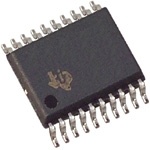
 Datasheet下载
Datasheet下载

